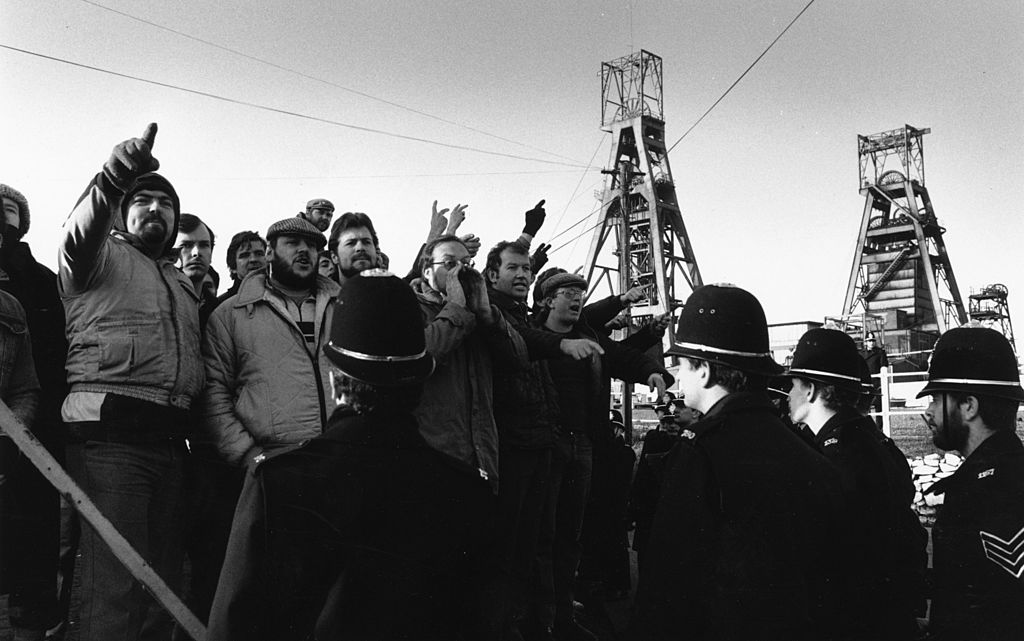
We don’t agree with everything in this interesting article- particularly on the possibility of ‘clean’ coal- but it is an interesting response to spurious Tory claims that the war on the miners was good for the environment.
First published at Tribune.
Boris Johnson’s joke that Britain’s pit closures were an ‘early start’ on environmentalism shows his contempt for mining communities – but also reveals the dangers of a green politics led by the elite.
Up until then the NCB had united with the NUM over concerns about the environmental impact of burning coal. In the seventies and eighties considerable advances were made in ‘clean coal’ technologies at its centres of scientific and engineering expertise at Stoke Orchard near Cheltenham and at Bretby in South Derbyshire. These limited the negative impacts of sulphur, nitrogen, and chlorine on the atmosphere, and plans were in place to capture methane underground. Mine closures in the aftermath of the miners’ strike in 1985 undermined these developments, and with the closure of the mines, the UK also lost much of its valued scientific expertise.
In 1980 the NCB operated 219 coal mines across the UK and employed a quarter of a million miners. In 1993, when the industry was privatised, just sixteen pits remained – but not for long. These closures, inflicted by the governments of Thatcher and Major, had a profound and lingering impact on the economies and community life of Britain’s old industrial regions. The Thatcher government, far from encouraging the development of high-tech green technology, focussed all of its plans on a one-off payment to the redundant miners and the establishment of limited funding for a scheme to encourage entrepreneurship on the coalfields.
Few ex-miners benefitted from this, and all assessments of the scheme’s operation, and of those that followed it, were negative. The level of funding was an issue (less than a twentieth of that which was spent propping up the banks in 2009), and this reflected the overall intention behind the government’s industrial strategy. The miners were, to all intents and purposes, pensioned off, and the future of these old industrial regions was left in the hands of the market and the beneficence of foreign inward investment. People in the coalfields who could once identify the winding gears of particular pits talked instead of ‘the sheds’, the often empty constructions put up as part of regeneration initiatives in a hope of attracting an employer.
In this context ex-miners searching for work found that their options were limited. Most found that they were being paid a £100 less per week than in the mine. The jobs were often insecure, of low esteem, and in factories dominated by assembly lines. Many found the experience unsettling, and questioned the purpose of it all. One man explained that his job was ‘adding novelties to crisp packs as they passed by me on the line – thousands of them.’ Another, in a similar factory, expressed disbelief that he had ended up in a job that was ‘so degrading it was hard to believe, I couldn’t put it into words.’ No green revolution here.
Coal mining was of course a deeply injurious industry affecting the lives and health of its workers, and there was a view that as coal mining was replaced by less arduous high-tech industry, the general health, wellbeing, and affluence of the people in the areas would be substantially improved. This has not happened; if anything, the opposite is the case.
The legacies of physical injuries and illnesses from the mines continued while the disappearance of mining jobs and the paucity of decent alternatives led to new forms of stress and mental illness. Repeated studies and census returns highlighted old coalfield areas like Mid Glamorgan, West Glamorgan, and Blaenau Gwent as having the highest rates of long-term illness in Britain, closely followed by the Easington district in County Durham. In Blaenau Gwent in 2013 over ten thousand people (one in six of the adult population) were being treated for depression with medication.
In 2017, the ex-mining village of Horden in County Durham—the place in the UK with the highest percentage of people on ill-health related benefits—was portrayed sympathetically by BBC reporters as the place ‘where welfare has replaced work’ and where ‘benefit is the backbone of the local economy’. This was the context for the comment by a GP in the town of South Shields at the mouth of the Tyne—a town that had once had three collieries—that all of his patients suffered from the same thing – SLS: Shit Life Syndrome. Poor housing, poor jobs, poor amenities, poor public transport: Shit Life Syndrome, a condition that generally affected the former mining communities of England, Scotland, and Wales.
What underpins this tragedy is revealed in microcosm by the transformation of the former coal corporation UK Coal into a property developer, and the research establishment at Bretby into a hotel and conference centre. It is part of the story of the dramatic decline in the country’s manufacturing capacity, and its transformation into an asset-based economy, a globalised bazaar of hedge funds, shopping malls, warehouses, and call centres. These changes illustrate the twin aspects of British deindustrialisation and its link to globalisation – domestic production replaced with imports while finance and property speculation thrive. As a result, by 2019, manufacturing made up just 10% of UK gross domestic product, compared with 23% in Germany and 17% in Italy. In 1981, manufacturing and mining employed almost six million workers – 22% of all jobs; by 2019 this had more than halved with 2.7 million workers making up just 7.7% of the national labour force.
Rather than create the basis for a green revolution, Mrs Thatcher had, in the words of one Conservative blogger, Andrew Sullivan, turned Britain into ‘a country for the likes of her son Mark, a wayward, money-making opportunist’. Not a legacy for Johnson to celebrate, or the ‘good early start’ toward making Britain the ‘Saudi Arabia of wind’. All this is fanciful, as are the ‘millions’ of high-paid jobs that he talks about. It is true that coal imports have reduced to six million tonnes and that the last two coal fired power stations are due to cease generation in 2024, but gas still counts for 34% of the burn. The future may well lie in off-shore wind power, but with manufacturing stripped bare, no British company has the expertise that Vestas and Siemens-Gamesa have accumulated in this area over the last decades; in fact, ONS data reveals that the number of companies based in the UK involved in off-shore wind declined from 2,000 to 1,500 in the years between 2014 and 2019.
If there was indeed an early start, it has clearly been wasted – if there is to be green revolution it’s unlikely to be driven by technologies ‘built better’ in the UK and its old industrial regions.

